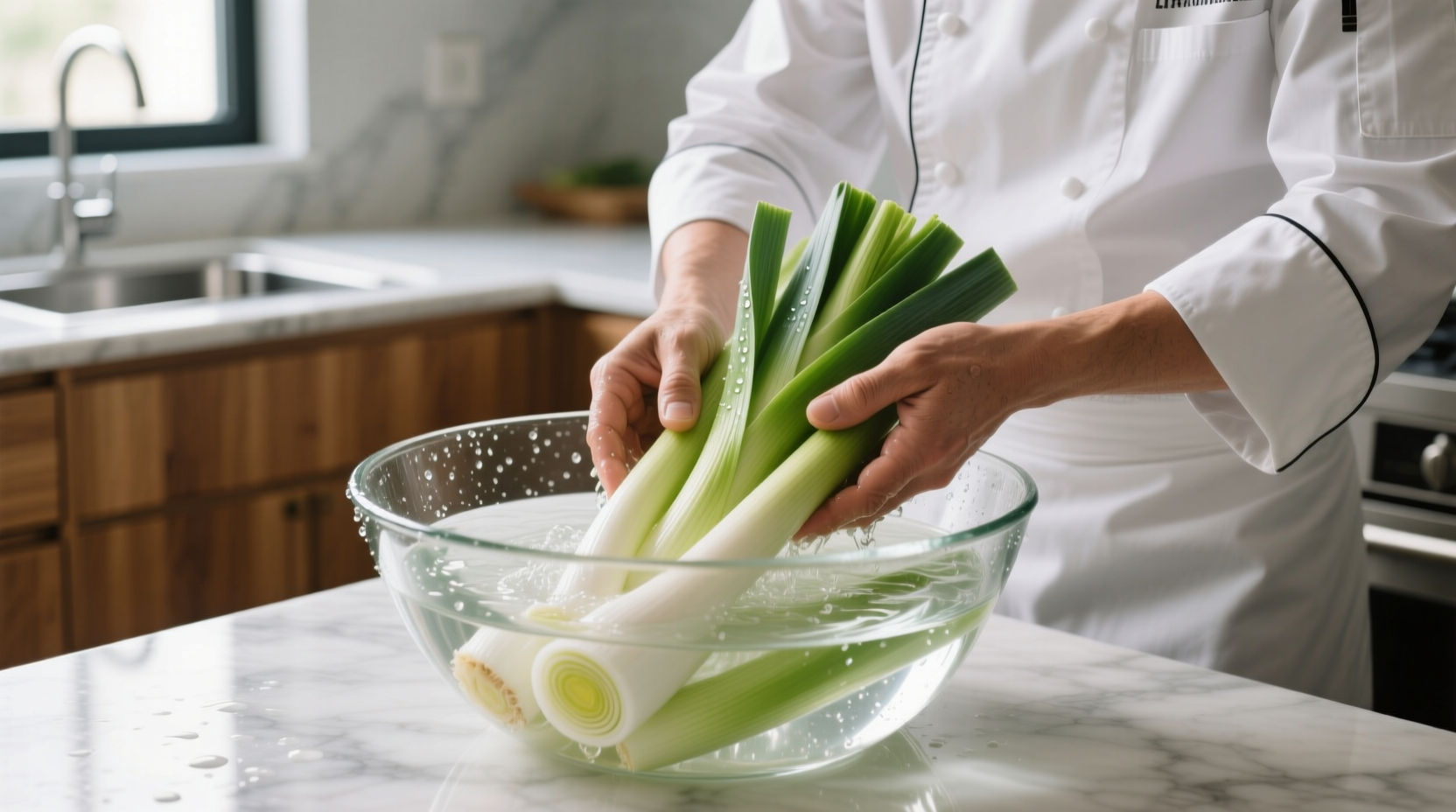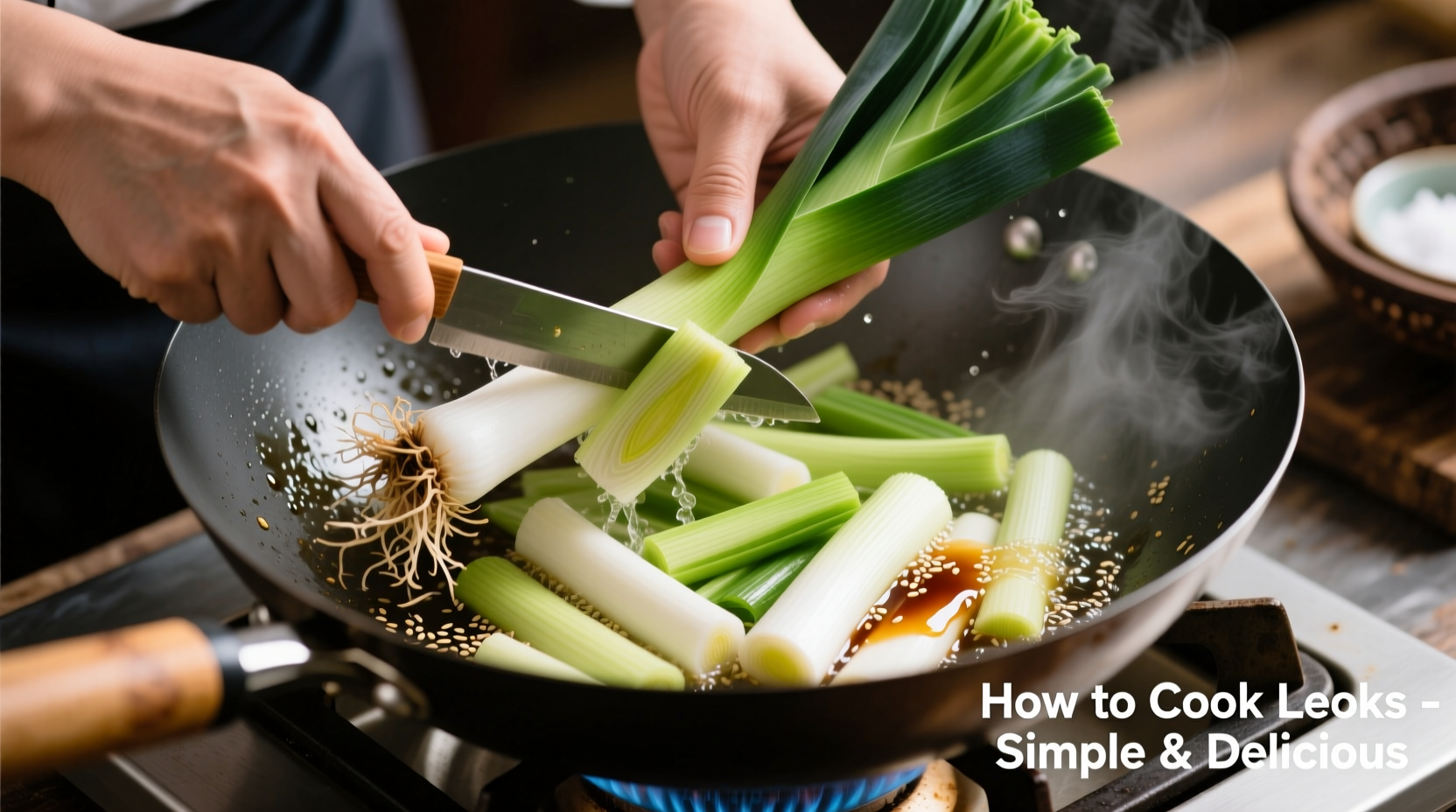Properly preparing and cooking leeks requires thorough cleaning to remove grit, precise cutting techniques, and appropriate cooking methods. Start by trimming roots and dark green tops, slice lengthwise, soak in cold water to remove dirt, then cook via sautéing (5-7 minutes), roasting (20-25 minutes at 400°F), or braising (15-20 minutes) for optimal flavor and texture without sogginess.
Discover exactly how to transform gritty, sandy leeks into a culinary delight with professional techniques that guarantee perfect results every time. Whether you're a beginner cook or seasoned chef, this comprehensive guide delivers the precise cleaning methods, cutting techniques, and cooking approaches that eliminate common mistakes and maximize flavor potential.
Understanding Leek Anatomy and Varieties
Leeks (Allium ampeloprasum var. porrum) belong to the same family as onions and garlic but offer a milder, sweeter flavor profile. Unlike their pungent relatives, leeks require special attention during preparation due to their layered structure that traps soil between layers.
| Leek Part | Flavor Profile | Best Cooking Methods |
|---|---|---|
| White and Light Green | Mildest, sweetest | Sautéing, braising, soups |
| Dark Green Top | More robust, slightly bitter | Stocks, stews, slow cooking |
According to USDA nutritional data, leeks provide significant vitamin K (50% of daily value per 100g), vitamin A, and manganese while containing only 61 calories per cup when cooked. Their unique layered structure makes proper cleaning essential for both food safety and dining experience.
The Critical Cleaning Process: Removing Hidden Grit
Skipping proper cleaning leaves unpleasant sandy residue in your finished dish. Follow this professional chef-approved method:
- Trim root end and dark green tops (save for stock)
- Cut leek in half lengthwise from top to root
- Place cut-side down and slice crosswise to desired thickness
- Transfer slices to large bowl filled with cold water
- Swirl vigorously to dislodge dirt, then let sit for 2 minutes
- Lift leeks from water (dirt settles at bottom), drain in colander
- Rinse briefly under running water for final cleanliness
Food safety experts at the FDA emphasize that thorough vegetable cleaning reduces foodborne illness risk by removing potential contaminants. For leeks specifically, this multi-step water method proves significantly more effective than simple running water rinses, which often fail to reach between layers where grit accumulates.

Precision Cutting Techniques for Different Applications
Your cutting method directly impacts cooking time and texture:
- Half-moons: Ideal for soups and sautés (¼-½ inch slices)
- Rounds: Best for roasting and grilling (thicker ¾ inch slices)
- Julienne: Perfect for stir-fries and garnishes (thin matchstick cuts)
- Whole: Suitable for braising and grilling larger varieties
Professional chefs at the Culinary Institute of America recommend cutting thickness based on cooking method—thinner slices for quick sautés, thicker cuts for roasting to prevent disintegration. Always cut against the grain (perpendicular to leaf layers) for optimal texture.
Master Cooking Methods for Perfect Results
Each cooking technique brings out different flavor dimensions while avoiding common pitfalls like sogginess or burning.
Sautéing: Quick and Flavorful
Heat 1 tablespoon oil or butter in skillet over medium heat. Add cleaned leeks and cook 5-7 minutes, stirring occasionally, until translucent but still slightly crisp. Add salt early to draw out moisture and prevent burning. For enhanced flavor, add a splash of white wine during the last minute of cooking.
Roasting: Deep, Caramelized Sweetness
Toss cleaned leek halves with 1 tablespoon olive oil, salt, and pepper. Spread on baking sheet and roast at 400°F for 20-25 minutes until tender and caramelized at edges. The University of California Cooperative Extension confirms that roasting vegetables at 400°F preserves more nutrients than boiling while developing complex flavor compounds through the Maillard reaction.
Braising: Tender and Flavor-Infused
Combine leeks with ½ cup broth or wine in skillet. Cover and simmer on low heat for 15-20 minutes until fork-tender. This method works particularly well with thicker leek cuts and preserves more water-soluble nutrients compared to boiling.
Pro Storage and Usage Tips
Maximize freshness and minimize waste with these professional techniques:
- Store whole, uncut leeks wrapped in damp paper towels in vegetable drawer (up to 2 weeks)
- Refrigerate cleaned leeks in airtight container with paper towel (3-4 days)
- Freeze blanched leeks for up to 6 months in portion-sized bags
- Use dark green tops for homemade vegetable stock (simmer 45 minutes with other scraps)
- Reserve root ends for regrowing in water on your windowsill
Cornell University's Food Safety Lab recommends storing cut vegetables in containers with moisture-wicking paper towels to extend freshness by absorbing excess humidity that accelerates spoilage. For leeks specifically, this technique prevents premature softening while maintaining crisp texture.
Simple Recipe Applications to Try Tonight
Put your perfectly prepared leeks to immediate use:
- Leek and Potato Soup: Sauté 2 sliced leeks with 3 diced potatoes in 1 tbsp butter, add 4 cups broth, simmer 20 minutes, blend until smooth
- Roasted Leek Tart: Arrange roasted leek halves on pre-baked tart shell with goat cheese and egg mixture, bake 25 minutes at 375°F
- Leek and Mushroom Risotto: Add sautéed leeks during last 5 minutes of cooking for fresh flavor contrast
Remember that leeks continue cooking slightly after removal from heat—pull them just before reaching your desired tenderness. For cold applications like salads, immediately plunge cooked leeks into ice water to stop the cooking process and preserve crispness.











 浙公网安备
33010002000092号
浙公网安备
33010002000092号 浙B2-20120091-4
浙B2-20120091-4